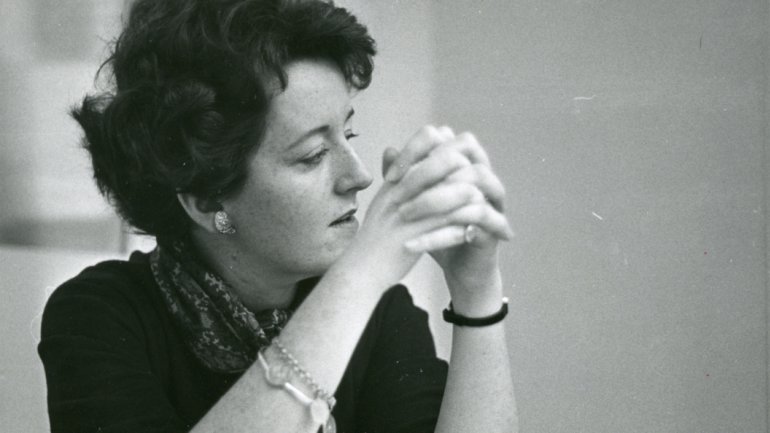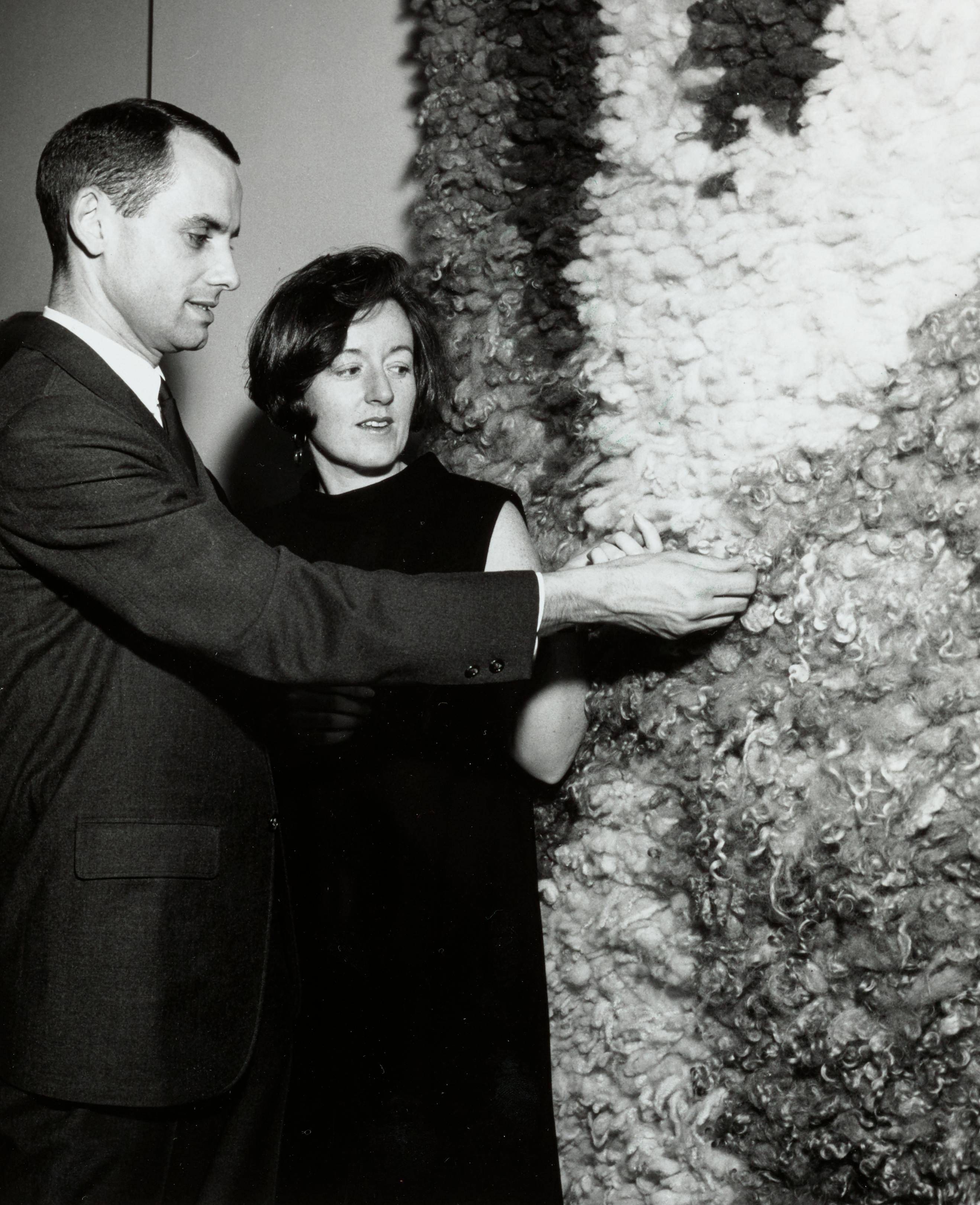Remembering: Lois Moran
Lois Moran, 1964. Photo: ACC Library & Archives.
Lois Moran, the former longtime editor-in-chief of American Craft and a preeminent figure in the contemporary craft movement, died from natural causes in New York City shortly after Christmas.
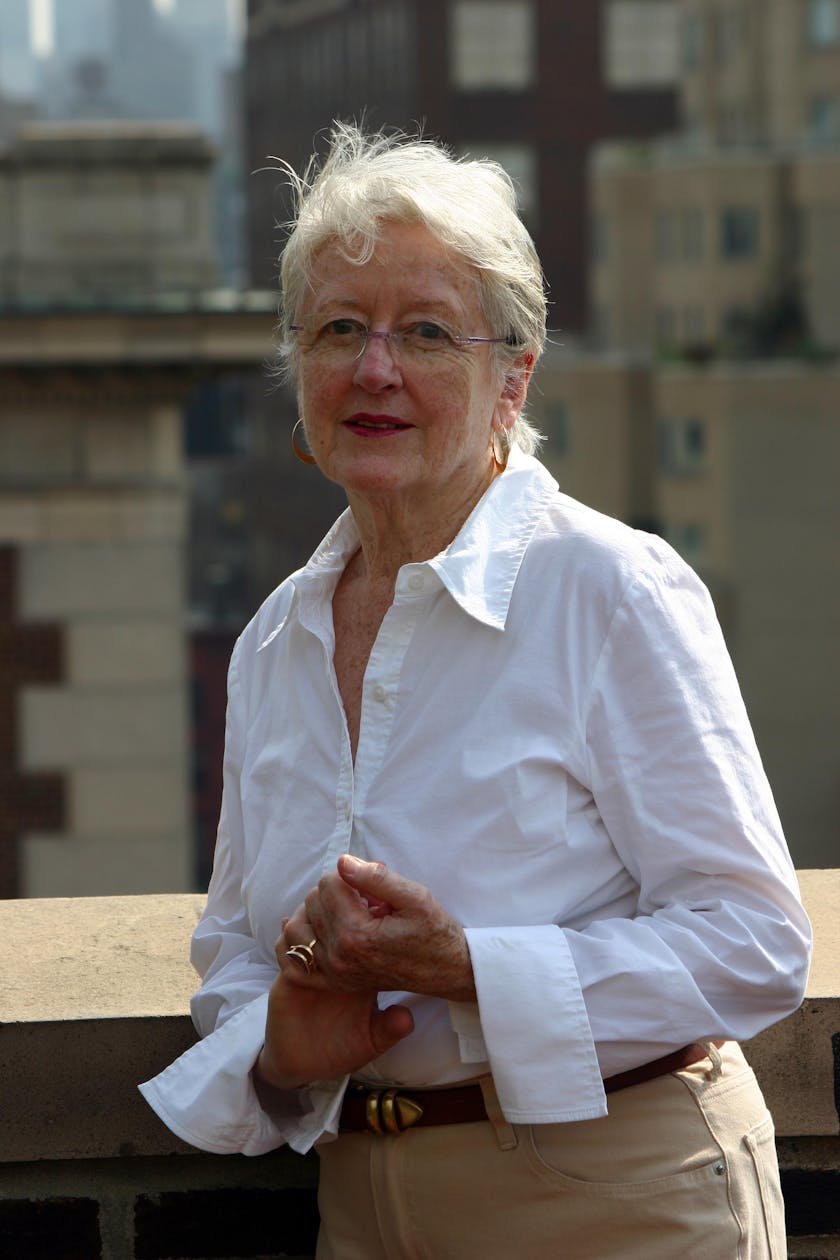
Lois Moran, ca. 2008. Photo: Paul Smith.
For the craft world, her passing is a momentous loss, a generational milestone. Lois was an indomitable presence on the scene for over five decades, respected internationally, a steady leader, chronicler, and advocate for the field through a time of extraordinary growth and change. On a personal level, those of us who knew her have lately commiserated about the ways, big and small, that she touched our lives. She profoundly shaped mine when she took a chance and hired me, a young and inexperienced college graduate, for her magazine staff in 1983, becoming my mentor, teacher, and, in time, friend. How bittersweet it feels to remember her now.
Lois could be quite private, so any biographical nugget she occasionally offered was fascinating to me. One was that her mother (to whom she was devoted, having lost her father in her teens) named her after another Lois Moran, a 1930s-era movie star. Raised in Elizabeth, New Jersey, Lois attended Catholic schools and graduated with honors from the Tobé-Coburn School for Fashion Careers in New York City. She joined the American Craft Council (then known as the American Craftsmen's Council and based in New York) in 1964 as director of regional programs, a job that took her around the country and gave her a lasting awareness of the breadth and diversity of the burgeoning craft field. In 1966 she became editor of the Council’s newsletter, and two years later got promoted to director of research and education. In that role, she initiated Your Portable Museum, a large collection of slides featuring work by contemporary craft artists. Over the years, she continued to move up the ranks at ACC, becoming director of national programs in 1977, then briefly serving as vice president of operations. In 1980, the Council’s magazine, Craft Horizons, was renamed and rebranded as American Craft, with Lois as editor-in-chief. It marked a turning point in the evolving craft movement, which had flourished creatively after World War II and was now taking off as a distinct discipline with a booming market, increasing presence in art museums, and new critical and popular acclaim.
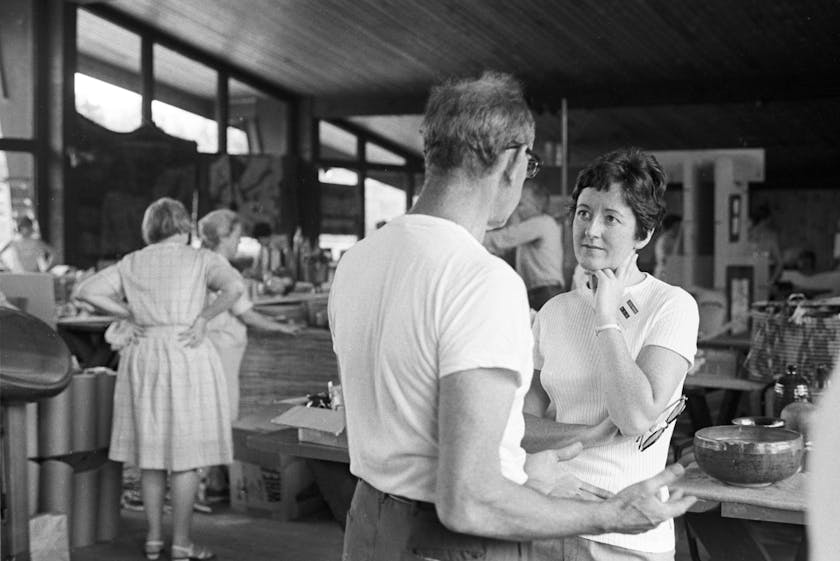
Lois Moran at ACC's NE Regional Craft Fair in 1967 as director of regional programs. Photo: ACC Library & Archives.
“There are a few people that I feel personified the field, embodied its history and aspirations, because of their experience of being there pretty much from the beginning. Those people tended to be visionary, to see the next step, what was needed to move the field ahead,” observes the wood sculptor Craig Nutt, a longtime friend of Lois. He puts her in that category along with her late colleagues Paul J. Smith, the groundbreaking director of the American Craft Museum (today the Museum of Arts and Design), and Carol Sedestrom Ross, who built ACC Craft Fairs into major wholesale/retail events. “Craft Horizons was a magazine that really spoke to the field,” Craig says. “American Craft was speaking out to the larger world.”
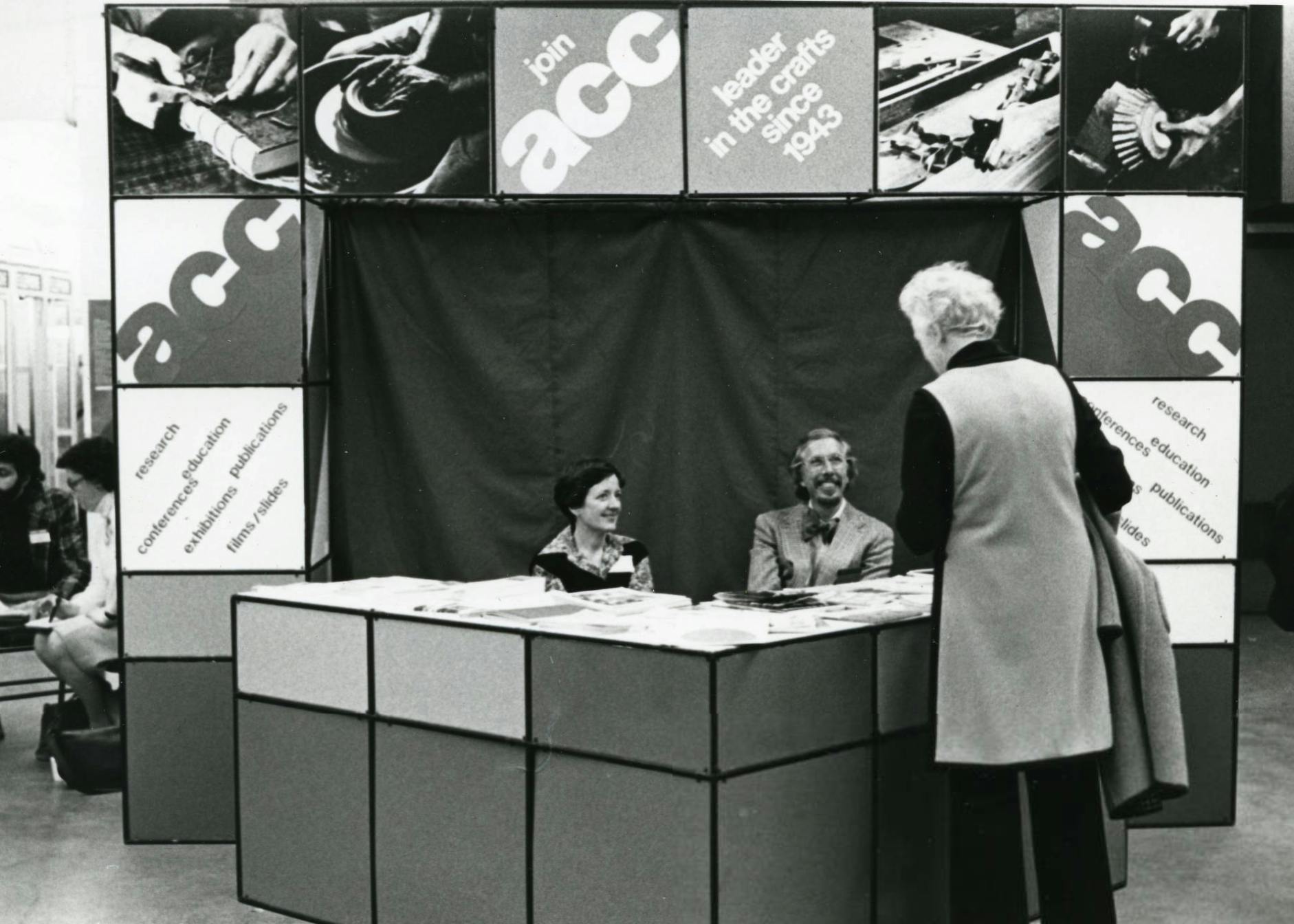
Lois Moran, ACC's national program director at the time, and Museum of Contemporary Crafts director Paul J. Smith talking at the ACC booth at the first Baltimore Winter Market in 1977. They're speaking with Winter Market juror Florence Pettit. Photo: ACC Library & Archives.
"I love the act of editing. I always enjoyed working with artists and trying to deliver the message of their work in an honest way and having the magazine reflect that,” Lois said late in her career. Joining the magazine three years into her editorship, I was introduced to a dazzling culture of technical skill and artistic expression that she was determined to present in all of its exciting variety. We were a small and dedicated staff working out of offices in Manhattan, with Pat Dandignac as managing editor. Lois emphasized quality in the work we featured, as well as diversity. Though we were based in what was then the art world epicenter, her years of regional outreach made her wary of the magazine appearing “too New York”—it was American Craft, after all—so we strove to highlight creativity in all parts of the country, by makers of every stripe. She insisted each issue have “balance”: functional wares and large-scale sculpture; celebrated masters and unsung talent; some history to inform the new. We branched out to explore the role of craft in design, architecture, and public life. Lois hired writers who were scholarly experts, or makers themselves, and also liked bringing in voices from outside the craft bubble. She was a wordsmith who cared about good writing; still, I got the sense she was interested not so much in how people wrote but in what they thought. Not one to shy from controversy, she published critical essays on the eternal “art-versus-craft” debate and other challenging issues. With Kiyoshi Kanai as design director, she saw to it that each gorgeous issue of American Craft was a work of fine craftsmanship in itself. And she kept a sharp eye on the bottom line.
Recently we, her former staff editors, took to email to share impressions of Lois. Christine Kaminsky remembers her as “a fair-minded person, full of integrity, who maintained high standards and required the same of others.” That sentiment is echoed by Isabella Brandt, who writes, “There is a picture in my mind that I remember vividly, that showed what a high achiever she was, how much she demanded of herself. She was walking down the hall to her office with her head down, reading something. She opened the door, turned on the light, sat down at her desk and continued reading in one movement, not looking up or around the room. She didn't allow herself to lose focus for a second.” Beverly Sanders recalls “her meticulousness in editing, her intolerance for sloppiness, her elegant penmanship when she added her comments to a manuscript.” She was, Beverly adds, “something of a collector, especially of artist-made jewelry—I loved her rings—and I have many a charming vase or teapot from a less-known maker whom Lois encountered on her travels, that she gave me for Christmas. I also remember when she gave each of us an antique Japanese kimono that she had acquired and mended.”
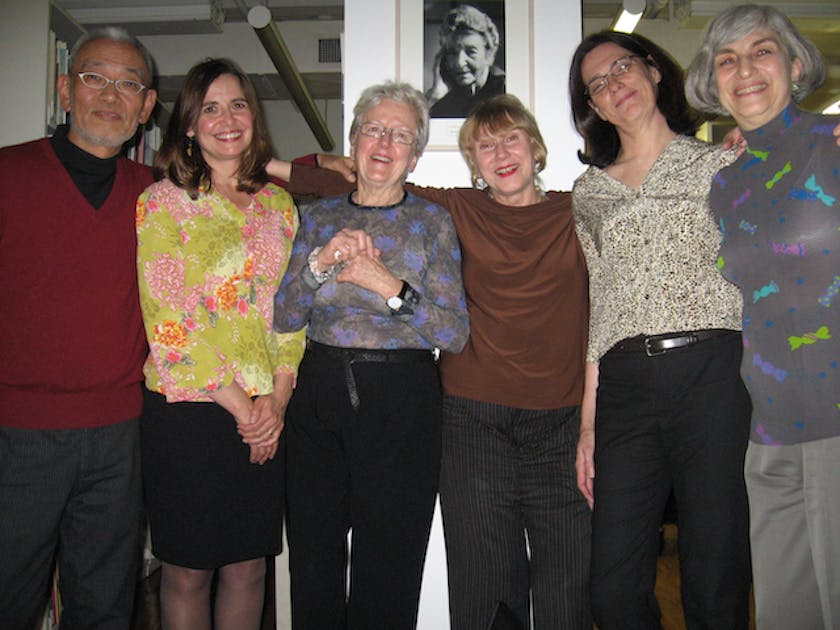
Lois with her magazine staff at her retirement party at the ACC office in SoHo, New York, December 2006. From left, Kiyoshi Kanai, Joyce Lovelace, Lois, Christine Kaminsky, Isabella Brandt, Beverly Sanders. Missing, and missed: the late Pat Dandignac, Eadie Dugmore, and Anita Chmiel. In background, a portrait of the Council's founder, Aileen Osborn Webb. Photo: Courtesy of Joyce Lovelace.
She had strong judgment and an eye that was discerning yet democratic, elevated yet never condescending. As much as any bold, avant-garde work, she appreciated small details and quiet artistry. “I loved going around with her to a museum or craft fair or antiquing, just to watch what caught her eye,” says Craig Nutt. “She loved antique linens, things I would maybe pass by. We had her down to Alabama to judge the Kentuck Festival. She bought a little corn husk doll, about as modest as could be, something I probably wouldn't have paid much attention to. But because she looked at it, I thought, ‘You know, that really is a nicely done piece.’ So it was an education to just be with her. She taught me to look at things in a different way.”
I think I remember that corn husk doll perched on a shelf in Lois’ office, alongside her books and other small, well-chosen objects. In any case, I know what Craig means. On her desk, she would put a single sprig of freesia in a cobalt-blue Ty Nant mineral water bottle—so simple and chic. For a young person on a budget, it was a bit of style I could emulate, so I bought my own Ty Nant bottle. I still use it for flowers as a lovely reminder of her, and of the uplifting power of everyday beauty in humble things.
In addition to her responsibilities as editor, Lois stepped up whenever leadership was needed, acting concurrently as executive director of the American Craft Council from 1988 to 1990. “Lois serves as an inspiration, a person who dedicated herself to a cause she believed in,” says the metalsmith David Bacharach, an ACC board member in those years. He and Lois had met in 1966, at the council’s first-ever craft fair in Stowe, Vermont. “Respect for Lois was based not on her title, position, or field of endeavor, but by the example she set,” Bacharach says. “She was a force of will among the Council's inner circle of staff and board members who were interested in ACC as an organization that taught, led, searched, and excelled.” It was fitting that in 1993, the National Museum of Women in the Arts honored her with its Lifetime Achievement Award.

Lois Moran pictured in Umbria, Italy, in 2008, when she and Chuck Coates traveled there to visit former American Craft design director Kiyoshi Kanai and his wife, Jun. Photo: Courtesy of Nor Coates.
As a woman in an executive role, Lois radiated power, the quiet, intense kind. It was part of her magnetism. She spoke softly, and people listened. She naturally commanded a room, and didn’t suffer fools. When necessary, she could be intimidating, and she got results; you wanted to please her and felt crushed to disappoint her, so you brought your best. Once deadlines were met and the magazine safely put to bed, she’d break out wine and cheese for staff, be irreverent and funny, let loose with her musical laugh. And in your time of personal difficulty, no friend was more compassionate, loyal, and discreet.
When Lois announced her retirement in December 2006 after 43 years with ACC, the Council threw a big party in her honor at its headquarters on Spring Street in SoHo. I was living in Los Angeles by then and flew to New York to join the crowd of friends and colleagues who turned out to toast her. At the end of the month, she emailed me, expressing understandably mixed feelings. “Well, yes, it's been strange,” she wrote. “A bit teary on occasion. Everyone has been most gracious toward me. But the reality of not coming here after today (or tomorrow, as I have more cleanup to do) is still not actual. It will be on January 1 and I hope I can develop a positive attitude.”
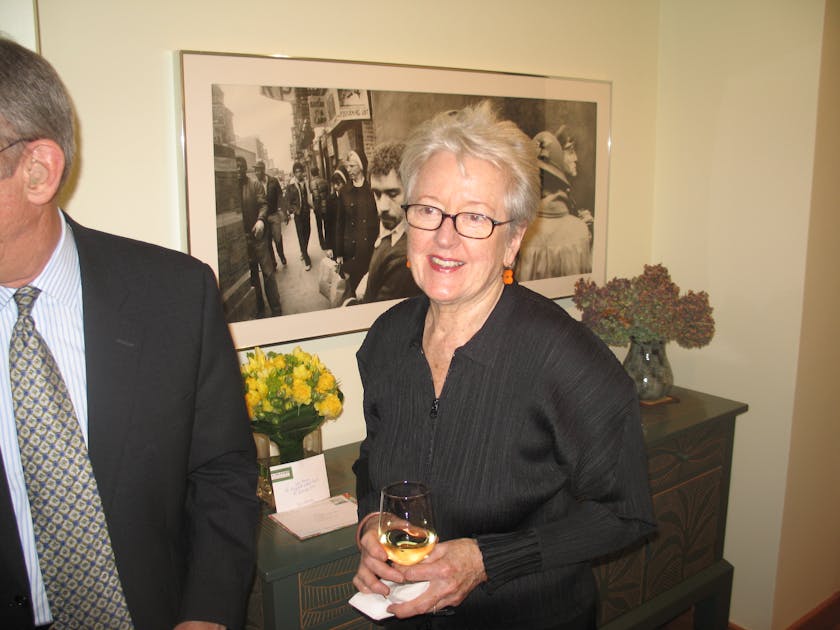
Lois Moran at her retirement party in New York City in 2006. Photo: ACC Library & Archives.
As it turned out, Lois thrived in her new life. She stayed active in craft and design as a guest panelist, juror, and consultant, and joined the board of The Furniture Society. More professional recognition came her way, including the 2006 Founders’ Circle Award from The Mint Museum, and induction as an Honorary Fellow of ACC in 2008. She avidly supported many charities, and kept up with friends like Paul Smith, who lived across town. She pursued her interest in cooking, closely followed politics (she loved the PBS NewsHour, especially Friday segments with David Brooks and Mark Shields, whom she affectionately called “the boys”), and tended her terrace full of plants. Her home since around 1979 was a sunny 20th-floor apartment on New York’s Upper West Side, with grand views of Central Park. “It was like a mini-museum. There wasn’t a thing there that wasn’t just perfect for it. Everything always seemed to be in exactly the spot where it was supposed to be. She had such an artistic and aesthetic sense,” says the author Adrienne Brodeur, daughter of Lois’ close friend Malabar Hornblower. On visits to their family home on Cape Cod, Adrienne remembers, Lois would put her famous green thumb to work in the garden. “She’d deadhead every plant and make sure everything was beautiful. She just was always so helpful, thoughtful, and kind.”
Best of all, Lois found joy in her personal life. Back around 1955, she’d met Chuck Coates at a friend’s wedding—she was a bridesmaid, he the best man—and they’d dated for a time. Chuck went on to become an Emmy-winning TV news producer (his credits include Sixth Hour News in New York and NBC's Huntley-Brinkley Report) and later a journalism professor at the University of New Mexico. After the death of his wife, he and Lois got back in touch, and in a romantic, out-of-a-movie twist became a couple once again. They were together for 15 happy years, sharing friends, family, vacations, and holidays, until Chuck’s death in 2019.
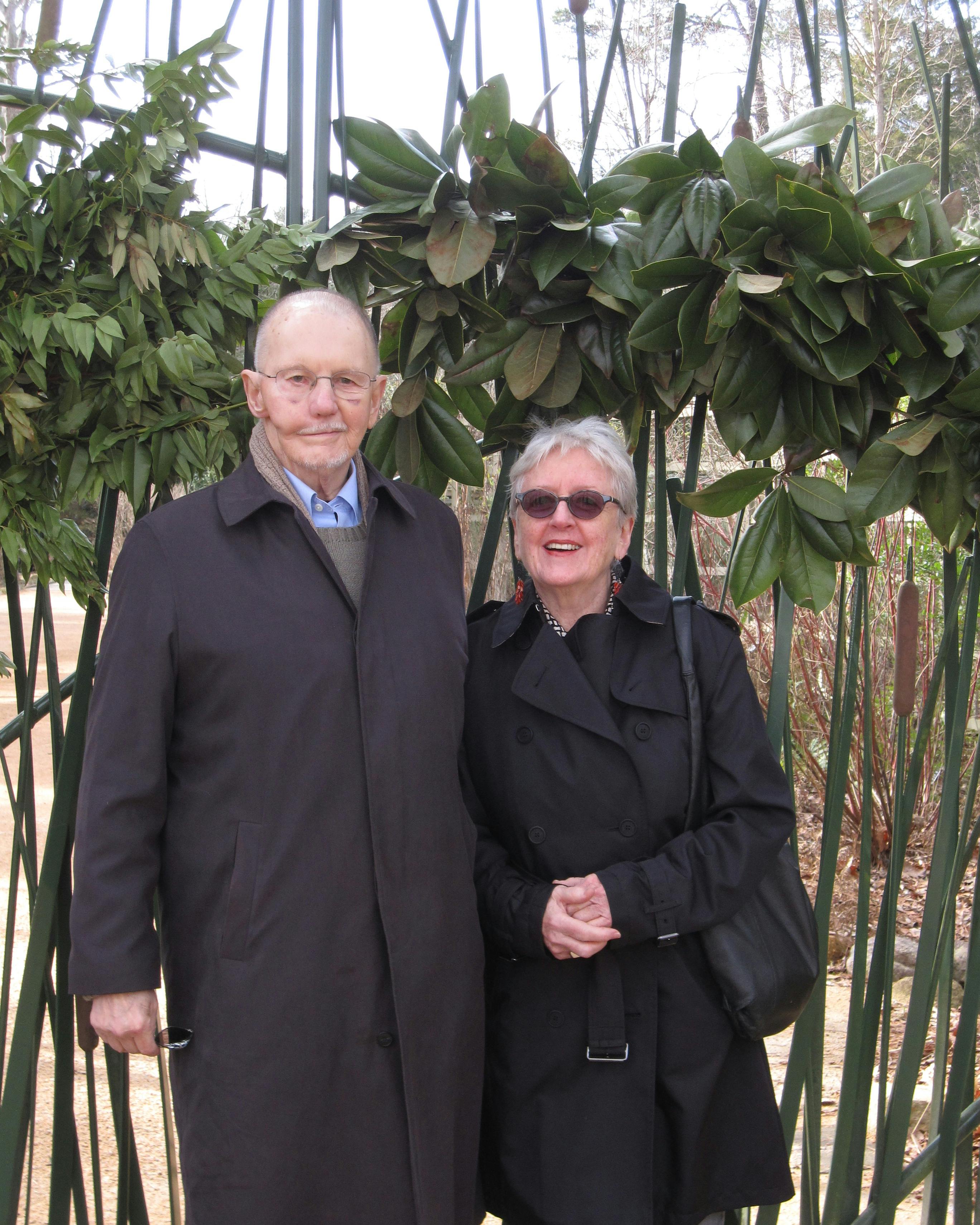
Lois Moran and Chuck Coates in Chapel Hill, North Carolina, December 2009. Photo: Courtesy of Nor Coates.
“Having Lois—or, as we called her, Lolo—in the family was a gift,” says Chuck’s daughter Elinor. “She was funny, thoughtful, intelligent, lively, and engaged with the family to the end.” Lois is survived by Elinor along with Chuck’s two other children, Charlie and Lindsay, their spouses, and six grandchildren.

Lois with the Coates family in Durham, North Carolina, December 2014. Photo: Courtesy of Nor Coates.
As I write this remembrance, I imagine Lois reading it and crossing out anything too flowery or sentimental. Those who knew her would agree she generally disliked a fuss. Still, she deserves one. I hope young creatives will take time to learn more about her, because there’s so much there to admire and inspire. A good place to start is the American Craft Council Library & Archives, to which she donated her extensive trove of meticulous files. These include her correspondence with artists, writers, patrons, and peers, in which her voice comes through, full of intelligence and charm.
Thank you, dear Lois, for everything.
Help Us Honor Lois' Legacy With a New Award
In recognition of Lois Moran’s devotion to American Craft magazine, gifts made in her honor will create the Lois Moran Award for Craft Writing to recognize writers who are committed to moving the craft conversation forward. The first award will be presented in Fall 2021. Please support the Lois Moran Award for Craft Writing by making a gift at the link below.


